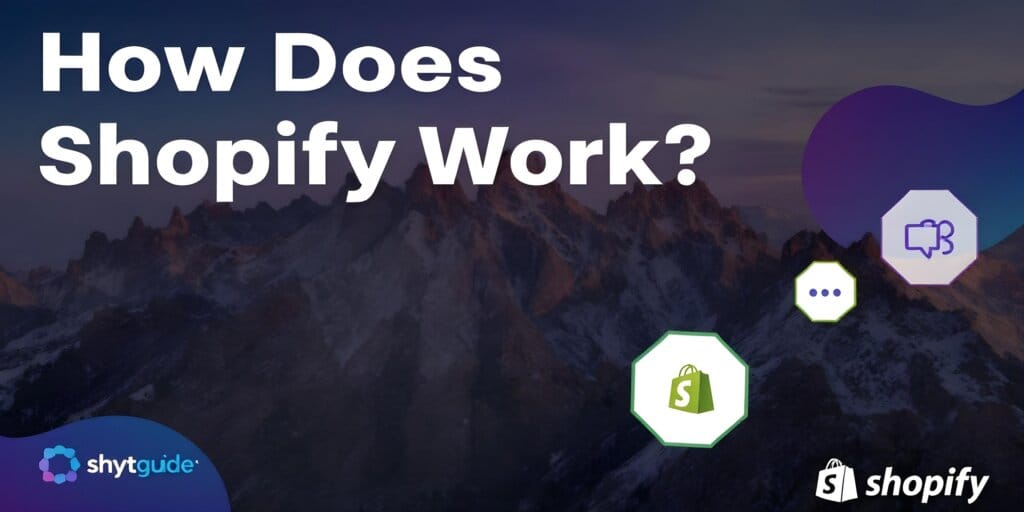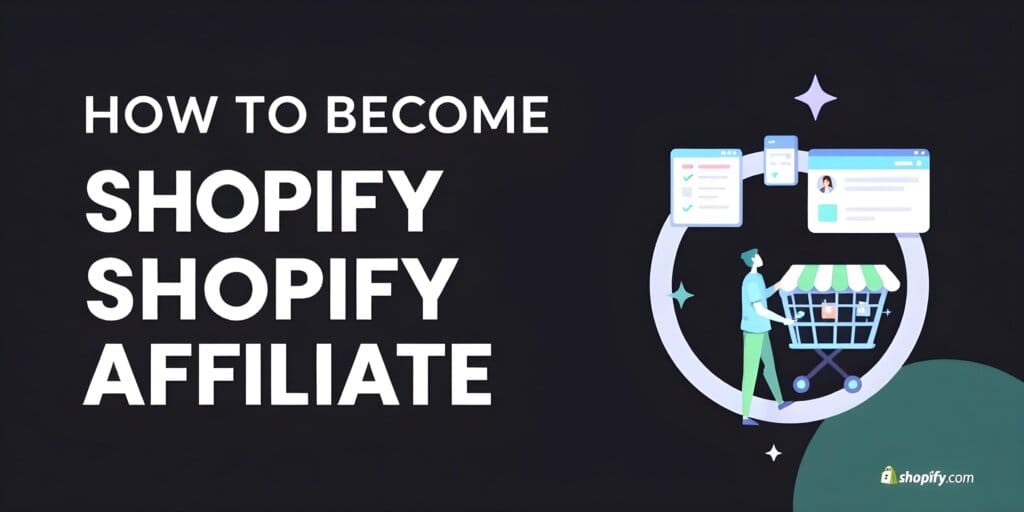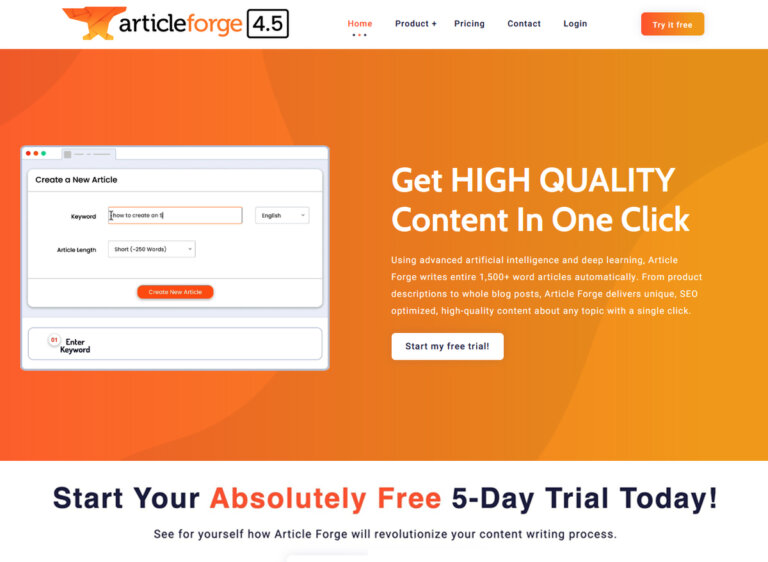What is Shopify?
What It Is Shopify, How It Works, Why It’s Popular for E-commerce. Shopify is a leading e-commerce platform that allows individuals and businesses to create and manage their own online stores. It’s cloud-based, offering a user-friendly interface and a range of tools to help users launch, customize, manage, and scale their e-commerce businesses. With Shopify, you can sell physical products, digital downloads, services, or even run a subscription-based business model. It includes features like inventory management, website design templates, payment processing, and integrations with third-party apps.

Is Shopify That Good?
Yes, Shopify is considered one of the best e-commerce solutions for many reasons:
- Ease of Use: Shopify provides an intuitive, user-friendly platform suitable for beginners and advanced users. You don’t need coding or design skills to create a professional-looking store.
- Scalability: It’s designed to grow with your business, whether you’re a small startup or a large enterprise.
- Comprehensive Features: Shopify offers built-in tools for payments, analytics, SEO, marketing, inventory management, and shipping, making it an all-in-one solution.
- Support: Shopify provides 24/7 customer support, access to extensive documentation, and a large community of users and developers.
- Apps & Integrations: Its App Store offers thousands of apps to add custom functionality, from email marketing to advanced inventory and logistics tools.
While Shopify has its advantages, there are some limitations:
- Monthly subscription costs (pricing starts at $39/month), plus potential transaction fees if not using Shopify Payments.
- Limited design flexibility compared to open-source platforms.
- Heavily reliant on paid apps for additional features.
Despite these limitations, Shopify remains a leading choice for e-commerce due to its simplicity, reliability, and global reach.
Why is Shopify so Popular for E-Commerce?
- All-in-One Solution: Shopify simplifies e-commerce by integrating all essential tools needed to operate an online store.
- Mobile Responsiveness: Its themes and interfaces are optimized for mobile devices, ensuring a seamless shopping experience for customers.
- Fast Setup: You can launch a store quickly with minimal setup time, making it ideal for entrepreneurs with limited technical expertise.
- Security and Reliability: Shopify handles security, PCI compliance, and server maintenance, providing peace of mind for users.
- Wide Ecosystem: Shopify integrates with major third-party platforms (like PayPal, Amazon, and Facebook), allowing businesses to sell across multiple channels.
- Global Reach: Shopify supports over 20 languages and multiple currencies, enabling cross-border transactions and international scaling.

Import Shopify to WooCommerce
What It Is Shopify, How It Works, Why It’s Popular for E-commerce. If you’re moving your online business from Shopify to WooCommerce (a WordPress-based open-source e-commerce platform), the process involves migrating your data, such as products, customers, and orders. It generally falls into these steps:
- Backup Existing Data: Ensure your Shopify and WordPress setups are backed up to avoid data loss.
- Export Shopify Data: In your Shopify dashboard, go to “Settings > Apps and Sales Channels,” then use an app like Cart2Cart (a migration tool) or Shopify’s in-built export features to download your store data.
- Install WooCommerce on WordPress: Ensure that WooCommerce is installed and set up on your WordPress site.
- Use a Migration Tool: Tools like Cart2Cart or the free Shopify to WooCommerce Importer plugin can make the transition process seamless. These tools import your products, orders, and customer data without manual work.
- Install Necessary Plugins & Themes: WooCommerce uses WordPress themes, so you’ll need to install a compatible theme. Choose plugins to replicate Shopify functions, like payment gateways or SEO optimization.
- Test Your WooCommerce Store: Ensure that everything (product pages, order history, inventory, etc.) migrated over correctly before full launch.
Note: WooCommerce offers more flexibility and requires more maintenance, as you’ll be managing hosting, updates, and customizations.
How Does Shopify Work?
Shopify is a complete e-commerce platform designed to help individuals and businesses create, manage, and grow their online stores. It streamlines the process of selling products and services online by providing an all-in-one solution for website creation, hosting, payment processing, and inventory management—eliminating the need for multiple service providers.

At its core, Shopify serves as a platform where you can build an online store, customize it to match your brand, manage your products and inventory, process payments, and sell across a variety of channels, including websites, social media marketplaces, and physical retail stores. What It Is Shopify, How It Works, Why It’s Popular for E-commerce
How Shopify Works: Core Features
Shopify works by providing users with a set of core tools and features designed to simplify e-commerce:
1. Store Creation and Customization
- Templates and Themes: Shopify offers a variety of free and premium themes that allow you to design your online store without needing web development skills. These themes are mobile-friendly and customizable.
- Customization Options: Through the drag-and-drop Shopify Theme Editor, you can change colors, fonts, layouts, and more. For advanced customization, you can access and edit the HTML/CSS code.
- Domain Setup: You can use a Shopify-branded URL (e.g., yourstore.myshopify.com) or connect your custom domain for a more professional appearance.
2. Product Management
Shopify simplifies product creation and inventory management:
- Product Listings: Add products with descriptions, images, pricing, SKUs, and variants (e.g., size, color).
- Inventory Monitoring: Track stock levels and set notifications for when inventory is running low.
- Categories/Collections: Organize products into collections (e.g., “Sale Items,” “New Arrivals”).
3. Payment Processing
Shopify enables merchants to accept payments safely and securely:
- Shopify Payments: Built-in payment gateway by Shopify that eliminates the need for third-party processors. It supports all major credit cards, Apple Pay, Google Pay, and local payment options.
- Third-Party Payment Gateways: Connect PayPal, Stripe, or other providers if you prefer.
- Multi-Currency Support: Sell products in different currencies for global businesses.
4. Order Management & Fulfillment
- Order Tracking: Manage orders from placement to delivery, with real-time order status updates.
- Shipping Tools: Shopify integrates with major shipping carriers (e.g., USPS, FedEx, DHL) to calculate real-time shipping costs and print labels.
- Dropshipping Support: Shopify supports dropshipping via apps like Oberlo and Spocket.
5. Sales Channels
Shopify allows you to sell products across multiple platforms such as:
- Your online store.
- Social media (Facebook, Instagram).
- Marketplaces (Amazon, eBay).
- In-person sales via Shopify POS (Point of Sale).
6. Marketing & SEO Tools
Shopify helps grow your audience with built-in marketing features:
- SEO Optimization: Add meta tags, titles, and alt text to improve rankings in search engines.
- Email Marketing: Use Shopify Email or third-party apps like Mailchimp to drive repeat sales.
- Discounts and Promotions: Create discount codes, sale offers, and free shipping promos.
- Integrations: Connect apps like Google Ads, TikTok Ads, or a blog to bring in more customers.
7. Analytics and Reporting
To help you analyze and optimize your business, Shopify provides robust reporting tools:
- Traffic Analytics: See who visits your site, where they come from, and what products they view.
- Revenue Reports: Track revenue, tax collection, shipping fees, and sales performance.
- Customer Insights: Understand your customers’ buying habits and demographics.
8. Third-Party Apps and Plugins
Through Shopify’s App Store, you can add features such as:
- Reviews and testimonials.
- Affiliate marketing programs.
- Custom product recommendations.
- Advanced inventory management.
9. Secure & Reliable Hosting
Since Shopify is cloud-based, you don’t have to worry about hosting or server maintenance. It handles:
- Unlimited bandwidth to scale with your business growth.
- PCI-compliance for secure credit card transactions.
- Automatic backups and updates.
Benefits of Using Shopify
- Ease of Use: Shopify’s user-friendly interface allows even beginners to launch and manage an online store.
- Complete Solution: It provides hosting, templates, payment processing, shipping management, and more in a single package, eliminating reliance on various platforms.
- Customization Flexibility: Use pre-made themes or customize with your own coding skills.
- Scalability: Whether you’re starting small or scaling to a large enterprise, Shopify supports your business growth.
- Global Reach: Sell worldwide with support for multiple currencies, languages, and localized checkout options.
How to Get Started with Shopify: Step-by-Step Guide
If you’re considering Shopify for your e-commerce venture, here’s how to get started:

- Sign Up for Shopify
- Start with Shopify’s 14-day free trial. You’ll need to provide an email address, store name, and basic details to create your account.
- Set Up Your Store
- Choose a theme and customize your store’s design. Add your logo, branding elements, and basic pages like “About Us” and “Contact Us.”
- Add Products
- Add individual products or bulk upload them if you have a large inventory. Organize them into collections for easier navigation.
- Configure Payment Methods
- Enable Shopify Payments or connect a third-party payment provider to start processing transactions securely.
- Set Up Shipping
- Define shipping zones, rates, and carriers. Use Shopify’s shipping discounts with major providers where applicable.
- Enable Sales Channels
- Launch your online store and connect additional channels for selling on social media or physical POS systems.
- Test Your Store
- Before going live, test your storefront, checkout process, and payment gateway to ensure everything works perfectly.
- Launch Your Store
- Once everything is in place, officially launch your store and start marketing your products.
Who is Shopify Best For?
Shopify is a versatile platform that caters to a range of business types:
- Small and Medium-Sized Businesses: Those seeking a low-maintenance solution to launch quickly.
- Scalable Enterprises: Shopify Plus (enterprise version) is designed for high-volume businesses.
- Dropshipping Entrepreneurs: Apps like Oberlo make it drop-shipper-friendly.
- Brick-and-Mortar Stores: Shopify POS offers omnichannel selling solutions.
- Content Creators/Influencers: To sell branded merchandise or digital downloads.

Is Shopify Right for You?
Shopify is ideal for businesses that:
- Want a fast, easy setup without technical expertise.
- Are willing to pay a monthly fee for a hosted solution (pricing starts at $39/month for the Basic Plan).
- Have products or services to sell online or in-person.
It may not be ideal for those who:
- Prefer open-source platforms (like WooCommerce or Magento) that allow full control over customization.
- Want to avoid monthly fees (though all platforms come with varying costs).
How to Become a Shopify Affiliate?
Shopify offers an affiliate program for individuals and businesses who want to promote Shopify in exchange for commissions. Here’s how to get started:

- Sign Up: Go to the Shopify Affiliate Program page and fill out the application.
- Wait for Approval: Shopify reviews applications to determine if you’re a fit for the program. They typically look for marketers, bloggers, content creators, or businesses with expertise in e-commerce or digital marketing.
- Access Affiliate Dashboard: Once approved, you’ll gain access to an affiliate dashboard with links and resources to help you promote Shopify.
- Earn Commissions: You’ll earn a commission for every new Shopify user who signs up through your referral link or affiliate code.
Key Benefits:
- Affiliates are paid a 200% bounty on the first month of a referred user’s subscription (e.g., $58 for a user who signs up for the $29 Basic plan).
- Access to Shopify resources, training tools, and dedicated support.
Tips for Success:
- Create content tailored to Shopify’s target audience, such as tutorials, case studies, or guides.
- Use social media, blogs, or YouTube to attract potential users.
- As Shopify is widely recognized, focusing on niche markets (e.g., specific industries like fashion or jewelry) can help you stand out.
In summary:
- Shopify is a powerful, user-friendly e-commerce platform. It’s “that good” because of its ease of use, scalability, and robust feature set.
- Its popularity stems from being an all-in-one solution that empowers entrepreneurs to build, manage, and grow online businesses without extensive technical skills.
- If you want to switch from Shopify to WooCommerce, you can easily migrate your data using third-party tools.
- Joining the Shopify Affiliate program is a great way to earn commissions by promoting one of the most trusted platforms in e-commerce.
Conclusion
What It Is Shopify, How It Works, Why It’s Popular for E-commerce. Shopify works as a complete e-commerce platform by centralizing all the tools needed to build, manage, and grow an online store. Its ease of use, scalability, global reach, and extensive features make it one of the most popular e-commerce platforms in the world. Whether you’re just starting or scaling an established business, Shopify offers the tools, flexibility, and support to succeed. see more blog
If you’re ready to join competing businesses in the online marketplace, Shopify could be the perfect platform for you to grow your venture effectively and globally.






